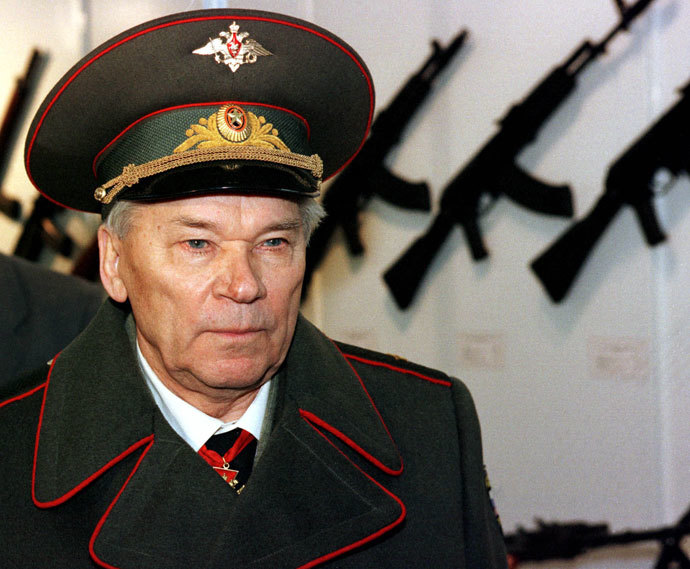“I’m proud of my invention, but I’m sad that it is used by terrorists … I would prefer to have invented a machine that people could use and that would help farmers with their work — for example a lawn mower.” (Mikhail Kalashnikov)
Moscow: Mikhail Kalashnikov, the inventor of the brutal assault rifle AK-47 has died at the age of 94.
“It is difficult and sad to realize that Mikhail Kalashnikov is no longer with us. We have lost one of the most talented, memorable and committed patriots of Russia, who served his country throughout his life,” said the statement from the press secretary of the Udmurtia administration Viktor Chulkov.
Russian President Vladimir Putin expressed “deep condolences” over the death of the engineer.
Kalashnikov who continued working well into his nineties, had been suffering from heart and intestinal problems, and on November 17 was admitted in intensive care in Izhevsk – where the plant that produces the eponymous rifles is located. The official cause of death will be revealed following a mandatory autopsy.
Kalashnikov was born in Kurya, Kuryinsky District, Altai Krai, Russia, to Aleksandra Frolovna Kalashnikova (née Kaverina) and Timofey Aleksandrovich Kalashnikov. Kalashnikov’s parents were peasants, but after deportation to Siberia had to combine farming with hunting, and thus Mikhail frequently used his father’s rifle in his teens. He has since continued hunting through his 90s.
After completing seventh grade, he left his family and returned to Kurya, hitchhiking for nearly 1000 km. In Kuriya he found a job in mechanics at a tractor station and developed a passion for weaponry. In 1938, he was conscripted into the Red Army. Because of his small size and engineering skills he was assigned as a tank mechanic, and later became a tank commander. While training, he made his first inventions, which concerned not only tanks, but also small weapons, and was personally awarded a wrist watch by Georgy Zhukov. Kalashnikov served on the T-34s of the 24th Tank Regiment, 108th Tank Division stationed in Stryi before the regiment retreated after the Battle of Brody in June 1941. He was wounded in combat in the Battle of Bryansk in October 1941 and hospitalized until April 1942.
In 1947, he designed the AK-47 (standing for Avtomat Kalashnikova model 1947). In 1949, the AK-47 became the standard issue assault rifle of the Soviet Army and went on to become Kalashnikov’s most famous invention.[15] While developing his first assault rifles, Kalashnikov competed with two much more experienced weapon designers, Vasily Degtyaryov and Georgy Shpagin, who both accepted the superiority of the AK-47. Kalashnikov named Alexandr Zaitsev and Vladimir Deikin as his major collaborators during those years.

From 1949, Mikhail Kalashnikov lived and worked in Izhevsk, Udmurtia. He held a degree of Doctor of Technical Sciences (1971 and is a member of 16 academies. Over the course of his career he evolved the basic design into a weapons family. The AKM (Russian: Автомат Калашникова Модернизированный – Kalashnikov modernized assault rifle), first appeared in 1963, was lighter and cheaper to manufacture owing to the use of a stamped steel receiver (in place of the AK47’s milled steel receiver), and contained detail improvements such as a re-shaped stock and muzzle compensator.
From the AKM he developed a squad automatic weapon variant, known as the RPK (Russian: Ручной пулемет Калашникова – Kalashnikov light machine gun), and the PK (Russian: Пулемет Калашникова – Kalashnikov machine gun), which used the more powerful 7.62×54R cartridge of the Mosin-Nagant rifle. The PK series is a general-purpose machine gun. It is cartridge belt-fed, not magazine-fed, as it is intended to provide heavy sustained fire from a tripod mount, or be used as a light, bipod-mounted weapon. The common characteristics of all these weapons are simple design, ruggedness and ease of maintenance in all operating conditions.

